.
WHAT ARE AIR HORNS?The standard electric car horn was first developed by Lucas in Birmingham, once the heart of the British motor industry, in 1910. Obviously its prime purpose is to alert and inform others of the vehicle's presence for reasons of safety. The wonderfully loud
"AH-OO-GAA!!" Klaxon was first developed around the same time but across the pond in America - It is particularly effective at grabbing attention and that is exactly what a good horn should do.
The typical horn on a modern family saloon is electrically driven from the battery and usually has a flat circular diaphragm within a 'snail' shape:

^ The VW Golf Mk5 has two 'snail' horns, each mounted low near each foglight.
Having two such horns adds only ~3 decibels to the overall sound output of having just one horn.
Air horns differ by being driven by an air compressor and usually by a 12-volt electrical compressor on cars. They are most common on trucks because they can draw air from the air brakes system. However, multi-tone air horns are also very much associated with Italian sports cars and were first used in the 1970's. The Italians are generally far more extroverted than the typical English and like most drivers in hotter climates think nothing of using their car horns at every opportunity. My inclination to follow that tradition is clearly due to my Italian/Greek ancestory. At least, that's my excuse and I'm sticking to it.
So, whether made in Italy or the Far East, single chord multi-tone automobile air horns with trumpets are generally referred to as 'Italian Air Horns'.
Typical truck air horns:

^ Typical show truck with roof mounted air trumpets - They're no longer exclusive to American trucks. [photo: djmhughes]
As long as the trumpets are simultaneously sounded, they are legal. Those which play songs such as 'Dixie' have to be fitted as secondary horns and switched separately. Even I frown on hearing the 'musical' song versions. I quite like the typically French "Dee-Da, Dee-Da, Dee-Da" horns though.
REGULATIONS:In the UK, noise from motor horns is regulated by the Road Traffic Act 1972. Horns may not be sounded in a restricted road between 11:30pm and 7:00am and not by a stationary vehicle unless there is a danger to another moving vehicle. Private vehicles must not be fitted with a gong, bell, siren or two tone horn. In my not-so-humble opinion, this regulation is sadly lacking in that it doesn't state that a horn may be sounded if there is a danger to pedestrians! Furthermore it is ambiguous what is meant by a "two tone horn" and so I choose to interpret it as meaning a horn which sounds its two (or more) tones separately rather than as a chord where the notes are simultaneously sounded together as my triple horns are. Although I understand that the 11:30pm-7:00am regulation is intended not to disturb people sleeping, I would not hesitate to use my horns to warn some drunk who was walking in the road after 11:30pm.
I have experienced the effectiveness of using air horns to warn school children too lost in their own group excitement to notice my approaching car. Also, at high speed on a 3-lane European motorway with a concrete wall central barrier and when a slower English car started to pull out into my lane at the last minute but instantly swerved back on hearing my air horns. I met the driver later (amicably - we all make mistakes) and he apologised but said he was a London bus driver and was used to pulling out and asking questions later! I'm also very glad I had the AP Racing brakes that day.
Unfortunately, the regulations no longer allow klaxons as the primary horn on road vehicles. One of my best friends at school's father had a 1930's straight-eight Railton and the
"AH-OO-GAA!! klaxon was regularly used and enjoyed. His uncle often drove an original supercharged Brooklands Bentley. I have been brought up with klaxons but that's another story. For those who don't know the Railton:

^ Similar straight-eight Railton. 'Ours' was a pale greenish blue cabriolet with dickie seat in the boot.

^ Vehicles officially registered as vintage like this fine Leyland truck are allowed to only have a klaxon or their original horn. [photo: djmhughes]
WHY CHANGE THE OEM HORN?Primarily because the Mk5 GTI OEM horn sounds weak and any horn should strongly urge that immediate movement out of the area is advised - You might say that it's a hint to others in the vicinity to get themselves off and multiply or eff off! A horn is a valuable safety mechanism and all road vehicles are obliged by law to have them in working condition. Another reason to change is because the Golf's OEM horn sounds boring and its lack of tonal richness is a sound more associated with a cheaper car rather than one which is more venerable. Have you noticed that more expensive limousines have grander sounding horns? A single
"beep" doesn't really cut the mustard and sounds puny.
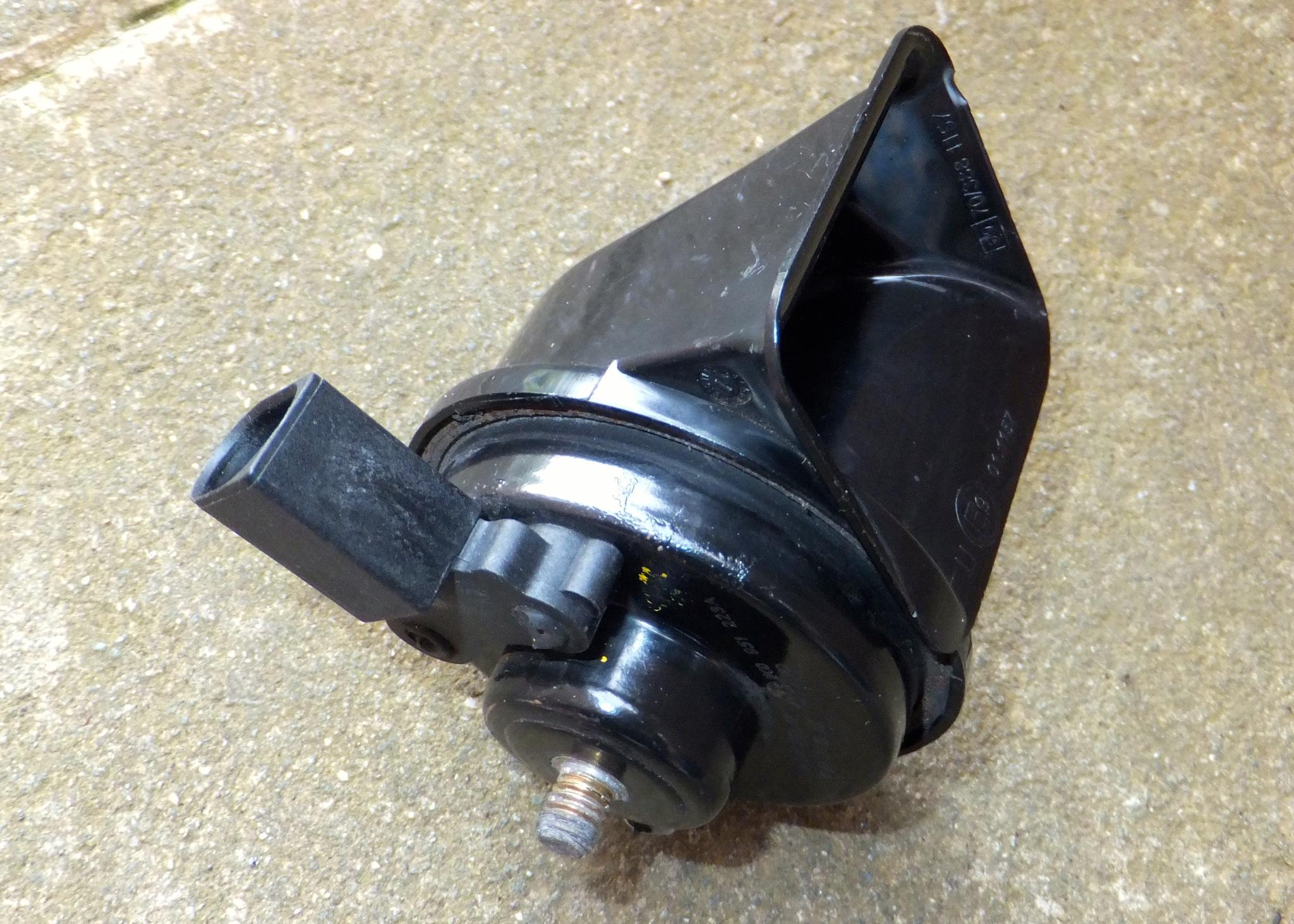
^ OEM Mk5 GTI horn made by Bosch.
Modern electric automobile horns have sound levels of approximately 100 decibels whereas automobile air horns are likely to be around 120 decibels and more, depending on the horns. The use of different sound frequencies as in a two-tone or triple-tone air horn, makes the sound more perceptible, particularly in environments with high ambient noise levels - This is another reason why I chose triple air horns as being more effective in alerting other road users. Modern cars have more soundproofing and more powerful radios and audio systems - This leads to the driver's senses being more isolated from the environment outside their vehicle and reduces the driver's ability to hear the horns of other vehicles. Amongst pedestrians the similarity of most standard car horns promotes relaxed familiarity and a tendency to ignore them. Higher pitched air horns stand a much better chance of being heard and consequently being effective as a safety device.
ALTERNATIVE HORNS:There are quite a few out there and both of the air and electric horn types. If you are going to use them as a primary horn it is essential that they are legal. If you are going to use a horn which is illegal, install it as a secondary horn with its own dedicated manual switch.

^ A selection of truck air horns, usually mounted as eye-candy where they can be seen as well as heard.

^ My previous 2-trumpet air horns which also had a failed compressor.
SOURCES:I bought mine from my local auto accessories shop and paid £22 for a kit with triple trumpets. The package included compressor, lines etc, and relay. These type of air horns seem to be manufactured under many different names and through numerous suppliers. I recommend finding air horns which cost above £20 as when I paid £12 for my first two-tone air horns the compressor only lasted about 12 months. Getting them replaced under warranty wasn't worth what would have been considerable hassle as retailers aren't often able to be very helpful regarding such products.
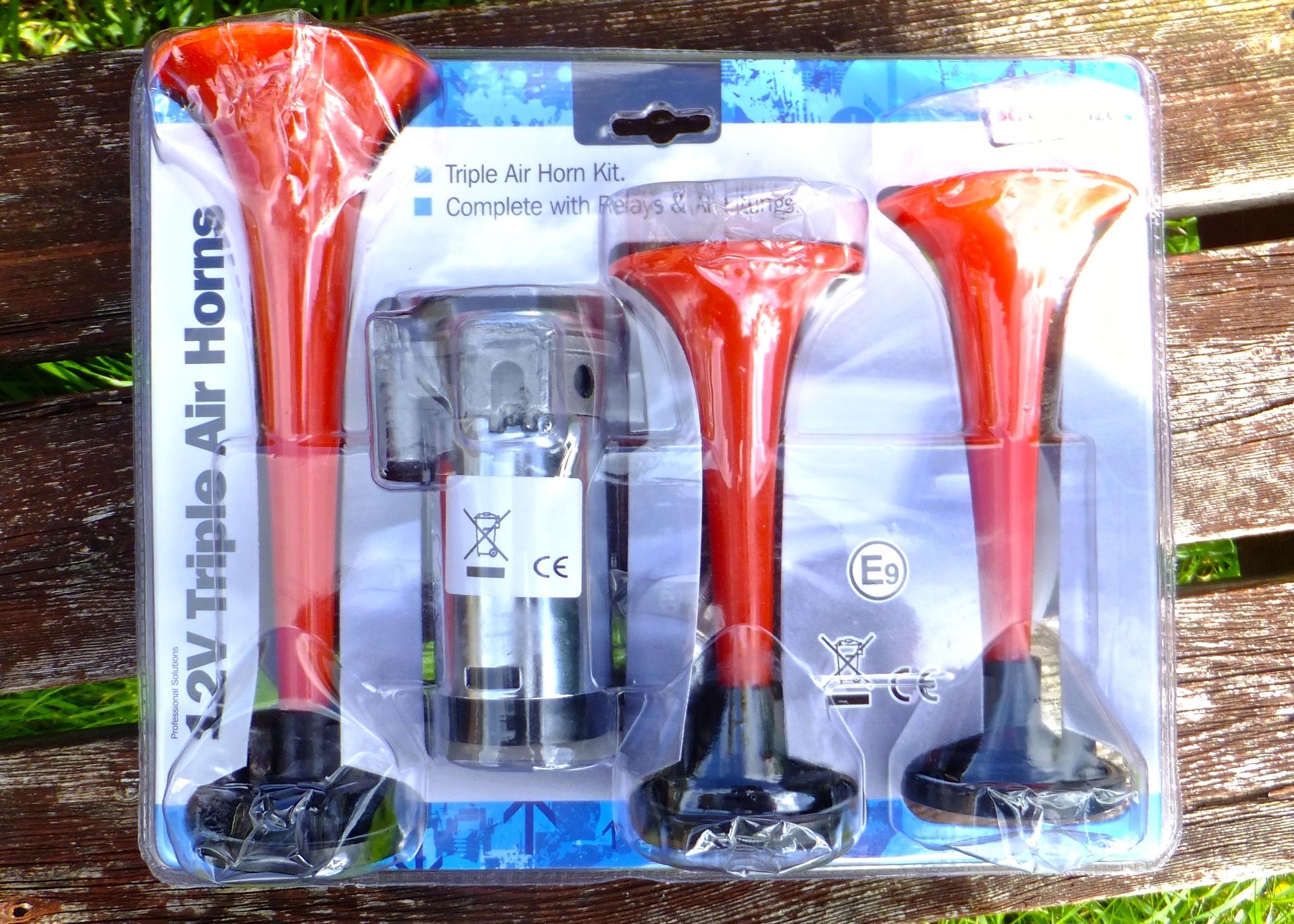
 http://www.streetwizeaccessories.com/car-accessories/Horns/23/all-categories/0/0/?catid=23
http://www.streetwizeaccessories.com/car-accessories/Horns/23/all-categories/0/0/?catid=23 Apparently Streetwize are big in the accessories market. However, the relay in their package which I bought was found to be faulty. quite frankly I would much rather have spent £50 and had a reliable product. Based on previous experience I don't know how long the compressor in this kit will last.
INSTALLATION:
^ "In Deutschland nicht zugelasson" means "Not certified in Germany" - Not TUV certified.
Straightforward and with printed instructions included. Easy for anyone who's capable of automotive DIY - So that excludes me! A garage not very originally named 'Topgear' in Bridport installed mine but needed the outside help of a freelance vehicle electrics specialist who found that the kit's relay was faulty and so supplied me one of his own. I'm glad that Jeremy Clarkson didn't install mine.
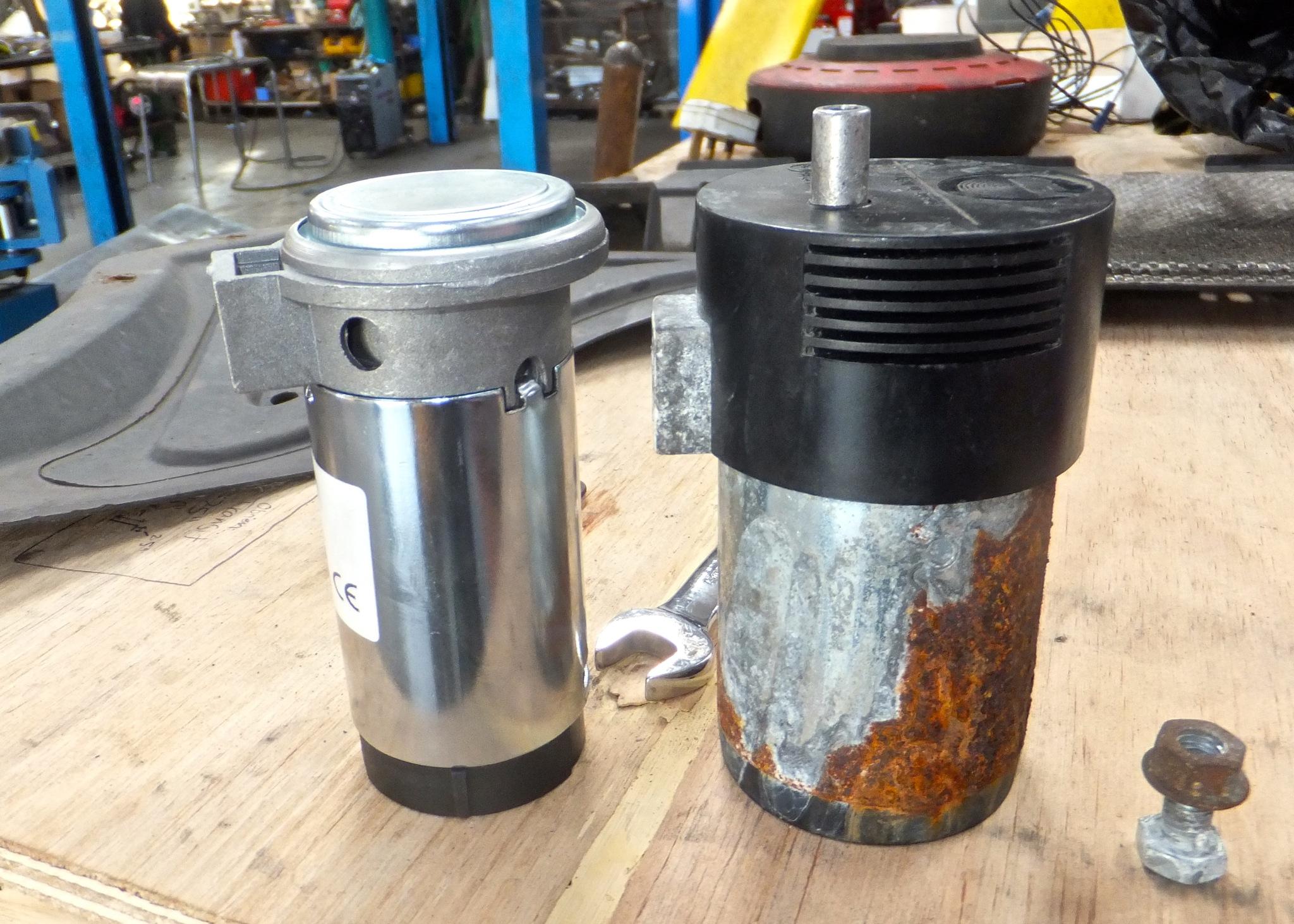
^ New compressor on the left. Failed compressor on the right.
The failed compressor had been wrapped in plastic to help protect it from the elements. However, the auto electrician advised me that that was a bad idea and had very likely contributed to its failure - They need to 'breathe'. Hence you can see the corrosion mine had suffered.

^ The mounted trumpets with compressor removed.
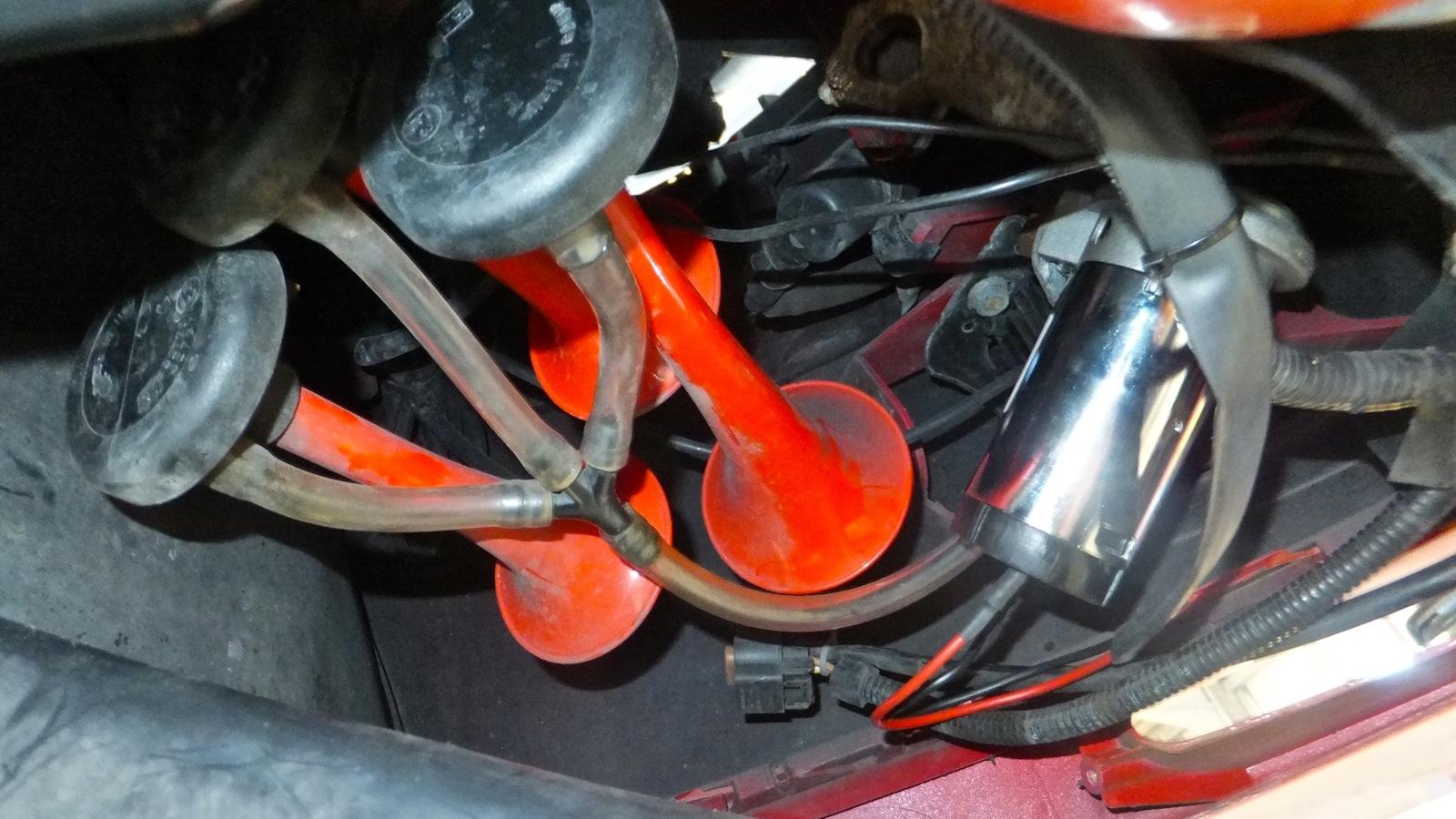
^ The completed installation with shortened air hoses and cable protection. Shorter air lines helps the sound attack.
THE SOUND:Recent recording with shorter air lines to improve the sound attack: [click the image]
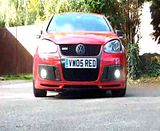
Unfortunately, these are too large to fit!:
PLUS POINTS:- Much more guaranteed to be heard than a standard car horn and therefore a more effective safety mechanism.
- They deliver a much more distinctive sound which also adds individual character to a car.
- Not expensive.
- Compact and relatively easy to install if no more than three trumpets.
- Useful to frivolously announce one's arrival at a friend's or at an enthusiasts car meet.
MINUS POINTS:- The compressors are their weakness in my experience - I am on my third set of air horns in about 5 years.
- It is difficult to source more expensive 12-volt automobile air horns which presumably might have better lasting compressors.
- Mine are louder and more effective than my car's OEM horns but not quite as loud as the devil in me would like

- They are not certified in Germany, which means they are not TUV certified. But that is not necessarily a problem.
- A temptation to be frivolous and use them other than just as warning safety device.
SUMMARY:If you never enjoy drawing any attention to yourself you won't be buying air horns. However, the safety aspect is extremely important and could even save your life and the lives of others including injuries or vehicle damage as the result of an incident/accident which might have been easily avoided with the use of a louder horn.
The most commonly spoken words at the scene of an accident are:
"I didn't see you !". If someone hears you they have a better chance of seeing you.

^ Kahlenberg are famous for their boat and ship air horns - Sound signals of industrial strength!